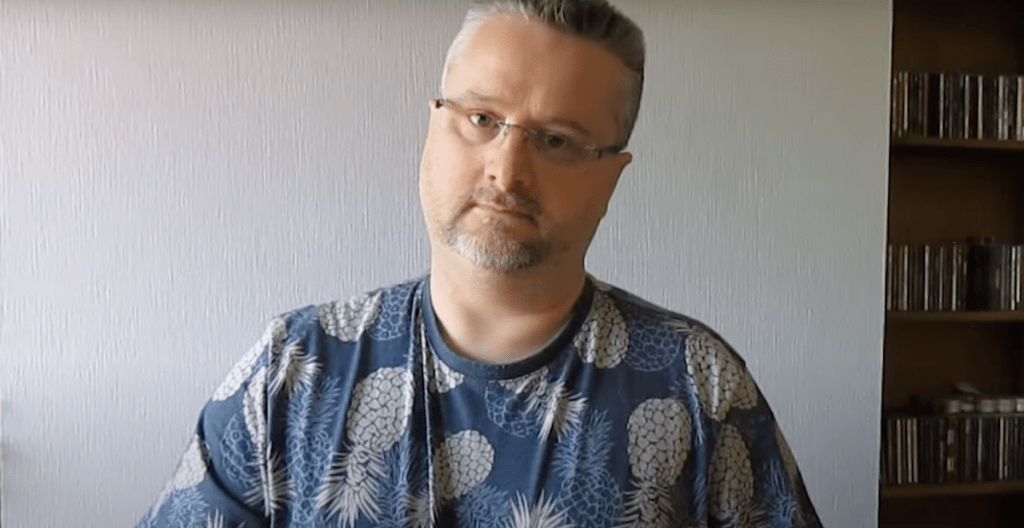
In 2010, the Clinical Advisory Group recommended every patient admitted to a Major Trauma Centre ought to have a rehabilitation prescription documenting their rehabilitation needs. Eleven years on, rehabilitation prescriptions are not used effectively and uniformly, to the detriment of patients and those who support them.
Tom Balchin is the founder of Action for Rehabilitation from Neurological Injury (ARNI) who had a haemorrhagic stroke when he was 21. For over 20 years, Tom has committed his life to helping stroke survivors make a functional recovery through a specialist rehabilitation programme that he developed based on his own experience. The ARNI programme is backed by clinical studies and Tom’s methods are endorsed by senior doctors.
Here, Tom talks about his experience with rehabilitation prescriptions and, if used properly, how it could benefit stroke survivors.
What is a rehabilitation prescription?
The idea of a rehabilitation prescription came out of Trauma Services a decade ago. During this time, there was a growing realisation that as patients moved between stages of recovery in acute centres to community rehabilitation, there was frequently a steep fall-away of information available to professionals and patients. This information is deemed to be essential to guide a patient’s rehabilitation to achieve the best outcome.
The rehabilitation prescription should identify the rehabilitation needs and how these needs will be met. It should be started within three days of admission to a Major Trauma Centre by a suitably qualified member of the rehabilitation team, usually a Band 7 physiotherapist. The rehabilitation prescription should be reviewed regularly and kept up to date.
What information should be in a rehabilitation prescription?
From a patient’s point of view, the main focus of a rehabilitation prescription is to document rehabilitation needs and to plan treatment to meet those needs. Neurorehabilitation is multidisciplinary. Core specialties include physiotherapy, occupational therapy, neuropsychology, and speech and language therapy.
The rehabilitation prescription ought to contain information on different aspects of recovery including:description of injuries/illness, psychosocial background, treatment received, clinical restrictions and individual rehabilitation needs.
There should be sufficient information for each specialist in the multidisciplinary team to plan and deliver ongoing rehabilitation to maximise the potential for an optimal outcome.
Who should receive a rehabilitation prescription?
The patient and/or family, as well as their GP, should receive a copy.
However, as Professor Mike Barnes, ABI Alliance Chair, has rightly noted: ‘the rehabilitation prescription has no value if the individual with an acquired brain injury and their GP don’t receive a copy. If the individual and the GP don’t know what rehabilitation is preferably required, then no access to services can be planned or implemented’.
There is a feeling, clinically and in the community, that the use of rehabilitation prescriptions is sporadic.
Why are rehabilitation prescriptions important for stroke survivors?
When the patient reaches the community, outside of the realm of NHS help, a rehabilitation prescription that can be used to guide ongoing rehabilitation is ideal. Some patients, or most often their families/carers, are very careful to keep as much information as they can.
Unfortunately, patients often seem to travel away from the clinical remit without copies of discharge notes and with no guidance about ‘what to do’ when they return home.
Especially during this pandemic, when disruption to health and care services has meant that national stroke initiatives across the country have been paused or slowed, it’s not surprising this is the case.
With innovative solutions being implemented to tackle disruption to stroke services, are rehabilitation prescriptions as important as ever or not?
Rehabilitation prescriptions would seem to be even more important during this pandemic.
This is because for patients who have gone without, or had very little therapy, and have the means to afford private support, a rehabilitation prescription would be ideal to guide an independent therapist or trainer.
A Stroke Association survey last year of almost 2,000 survivors makes interesting reading. The number of stroke survivors who had therapy cancelled or postponed was very high – 44 per cent had appointments related to their stroke online or over the phone during the pandemic and 28 per cent had therapy online or by phone.
Unfortunately, virtual methods of healthcare have not been viable for all. The number of stroke survivors who had therapy cancelled or postponed is double the number who received therapy online or over the phone pre-pandemic.
This shows that many have not had their usual rehabilitation support, but with a rehabilitation prescription, would at able possibly to have been supported into some kind of community-run therapy, possibly delivered by the third sector.
What is your experience with rehabilitation prescriptions in stroke survivors?
They basically don’t happen. Even now, senior clinical therapists around the country have only heard rumours about them being created and are not clear what form these would take.
I spoke with Avril Drummond, Professor of Healthcare Research at Nottingham University, about rehabilitation prescriptions for stroke survivors.
Professor Drummond is well versed in the national situation and forthcoming initiatives in stroke. After enquiring with colleagues for a few weeks about rehabilitation prescriptions for stroke survivors she ‘drew a total blank’.
Further questioning to the National Leads revealed they ‘don’t know’. If the National Leads don’t know, then we can be quite sure nothing is going to take place on this any time soon. This is a shame because it would be invaluable for a patient to know any trainer or therapist they work with can access to a simple ‘passport’ containing up to date information on their rehabilitation needs.
Ideally, a rehabilitation prescription would be updated as a patient advances in their life after stroke. The rehabilitation prescription would be accessible by other rehabilitation professionals. Assisting professionals is essential to achieving the best outcome in the most efficient way.
What is required to ensure rehabilitation prescriptions are used effectively?
There needs to be a comprehensive national rehabilitation strategy to roll-out rehabilitation prescriptions as a requirement to give to patients and professionals. This would provide clear information to refer to as patients move from acute services to community services and beyond.
Tom Balchin is founder of The Arni Institute – for more information, visit www.arni.uk.com. He was speaking with Hokman Wong, senior solicitor at law firm Bolt Burdon Kemp and a specialist in adult brain injury claims.








